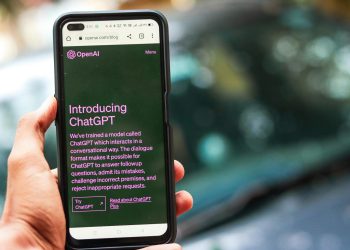Understanding BERT Model
Evolution of BERT
BERT, which stands for Bidirectional Encoder Representations from Transformers, popped onto the scene thanks to the brains at Google AI in 2018. This fancy piece of tech has made a real splash in the AI world. So, what makes it tick? Well, unlike previous models that read text like a book—from start to finish—BERT takes it all in at once, word soup style (GeeksforGeeks).
Think of BERT like your know-it-all friend who can chime in on any conversation. It jumped in to fix what older language models couldn't by doing its thing in two directions. BERT didn't just put its feet up after arriving; it aced 11 natural language understanding tests. That's stuff like guessing your mood from your words, sorting your sentences, and figuring out what the heck certain words mean (TechTarget).
| Year | Milestone | Importance |
|---|---|---|
| 2018 | BERT hits the scene | Shook up NLP by reading words in both directions |
| 2018 | Kick butt in 11 tasks | Proved its worth in things like guessing mood and sorting out sentences |
| 2019 | Went multilingual | Stretched its talents to over 70 languages |
Core Architecture of BERT
BERT's main structure borrows from something called the Transformer model, using self-attention tricks to get better at understanding words. Here's the lowdown on what makes BERT tick:
-
Bi-directional Encoding: Old-school models are like reading a book page by page, but BERT's like picking up a conversation from all sides. It does this fancy two-way text reading, getting the hang of words and their friends.
-
Transformer Encoder: This is like the layers of an onion—BERT’s got stacks of them, each peeling back to get a deeper understanding of the text. This helps it handle all sorts of NLP tasks.
-
Unsupervised Pre-training: Before it mastered chatting with computers, BERT crammed like a student with a mix of Wikipedia (about 2.5 billion words) and the whole Google BooksCorpus, which is another 800 million words, marking around 3.3 billion words in total (Hugging Face). During study time, BERT had two big chores:
-
Masked Language Model (MLM): It has a habit of hiding words in its texts and then trying to figure out what those words were based on the clues around it.
-
Next Sentence Prediction (NSP): BERT takes two sentences and guesses if you'd naturally read one after the other. It's like predicting the next chapter in a story.
| Component | What’s It Do? |
|---|---|
| Bi-directional Encoding | Snaps up text from both sides for crystal-clear understanding |
| Transformer Encoder | Onion layers that make text handling smooth |
| MLM | Plays word-guessing games |
| NSP | Connects the dots between sentences |
With such skills, BERT has found a cozy spot in tons of language model applications like mood detection, sorting text, and figuring out role-play in language. It's like the Swiss Army knife of word processing, ready to tackle any language job across different fields.
BERT's Functionality
Here we explore how BERT works, zooming in on its standout tricks: the way it reads things both ways at once and its clever learning process.
BERT's Way of Seeing Things
BERT, standing for Bidirectional Encoder Representations from Transformers, changes the game with how it understands the language. Unlike older models that read words from left to right or the other way around, BERT checks out the words around each one at the same time. This sneak peek lets BERT catch stuff other models could miss. It's like being able to see with two eyes instead of one – you get a better picture (GeeksforGeeks).
This way of seeing things helps BERT get the hang of tricky sentences since it can figure out a word's meaning by looking at all the words around it. This is super handy for jobs like figuring out emotions in text or answering questions. For more about similar models, check out our take on transformer models.
How BERT Learns
BERT’s brainpower comes from two main tricks: Masked Language Model (MLM) and Next Sentence Prediction (NSP).
Masked Language Model (MLM)
MLM is kind of a word game that boosts BERT’s brain. During this game, 15% of the words in a sentence are hidden, kind of like a fill-in-the-blank puzzle, and the model needs to guess them. BERT puts together clues from words on both sides of the missing word, like how you’d guess a word in a crossword (Hugging Face).
Next Sentence Prediction (NSP)
For BERT to figure out how sentences link up, it uses NSP. This process gives the model two sentences and asks if the second one should follow the first. Mixing real sentence pairs with random ones trains BERT to tell which ones are connected and which aren’t (Hugging Face).
| Training Strategy | What It Does | Source |
|---|---|---|
| Masked Language Model (MLM) | Fills in masked words using clues from both sides | Hugging Face |
| Next Sentence Prediction (NSP) | Figures out if a sentence logically follows another | Hugging Face |
These learning tricks make BERT a champ in lots of language tasks like sentiment analysis. With the Transformer model's way of seeing both ways, BERT raises the bar for pre-trained language models. If you're keen on getting BERT ready for special tasks, see our piece on fine-tuning language models.
BERT's Applications
BERT—yeah, the buzzword in natural language processing (NLP) circles. We're diving into a couple of its coolest tricks: making sentiment analysis smarter and chatting in multiple languages like a global citizen.
Sentiment Analysis with BERT
What's BERT's secret sauce for sentiment analysis? It’s got this two-way smarts that catch what's happening both before and after each word in a sentence. That means it gets the mood from all angles, not just one way (GeeksforGeeks). It's like BERT's got a knack for reading the room better than older models ever did.
Here's how it cracks the code of sentiment:
- Schooling the Model on Tons of Text: First, BERT goes through this massive reading list with the Masked Language Model (MLM) technique, kind of like hiding words and guessing them using the rest of the sentence.
- Getting Personal with Sentiments: Then it hones in on specific feelings with labeled data—like sorting reviews into happy, grumpy, or meh moods.
- Sentiment Detective Work: Once all tuned, BERT's all set to read the vibe of new text with impressive accuracy.
Check out how BERT stacks up against other models:
| Model | Accuracy (%) |
|---|---|
| Old-School Models (word2vec, GloVe) | 85 |
| BERT's A-Game | 92 |
Want to know more about how big language models work? Head over to our piece on applications of large language models.
Multilingual Capabilities of BERT
BERT’s multilingual talent is no less impressive. It’s like the ultimate polyglot that can decode and converse in over 100 languages. Perfect for, you know, those businesses dealing with this jumble of languages.
BERT’s been prepped on multilingual texts, making it savvy with various dialects and accents. Thanks to this, it pulls off zero-shot learning—basically doing stuff in a new language without needing fresh training.
BERT’s Language Super Line-up:
- English
- Spanish
- French
- German
- Chinese
- Japanese
- And a bunch more
Besides just understanding chit-chat, BERT’s multilingual chops help in:
- Cross-Language Mind-Bending: Once it knows one language, it can switch gears to another, handy for translating and finding info across languages.
- Mood Detection Around the Globe: It reads emotions across languages consistently, so businesses get reliable mood readings no matter where their customers are.
- Text Organization and Entity Spotting: Whether it's organizing data or picking out key bits from different languages, BERT’s on it.
For the nitty-gritty details, check out our spiel on multilingual support of BERT.
By tapping into BERT’s knack for understanding feelings and multilingual chatter, businesses get a leg up in the global market. It's like BERT's become the must-have toolkit piece for smart NLP. For a deeper dive on fine-tuning these skills, explore our part on fine-tuning language models.
Need the full scoop on how big NLP models tick? Our big read on large language models is waiting for you.
Enhancements from BERT
The BERT model's entrance into the tech scene was like a game-changer. Let's gab a bit about how BERT jazzed up Google Search and its knack for yakking in multiple languages.
Impact on Google Search
Back in October 2019, Google spiced things up by slipping BERT into its search brains. This wasn't just any upgrade; it was a massive jump! BERT got sharper at grasping about 10% of English questions tossed around by folks in the U.S. (TechTarget). Its flair for catching the drift of everyday chitchat meant it could decode even the trickiest of questions.
Google cooked up two BERT flavors: BERTbase and the beastly BERTlarge. The latter's like the heavyweight champ with 24 transformer layers, 16 attention heads, and a whopping 340 million brainy bits.
| BERT Version | Transformer Layers | Attention Heads | Parameters |
|---|---|---|---|
| BERTbase | 12 | 12 | 110 million |
| BERTlarge | 24 | 16 | 340 million |
Google’s search results got way cooler with BERT, drawing a huge thumbs-up from anyone on a quest for top-notch info. For a closer look at how this tech twist helped info-finders, check our word on language models for information retrieval.
Multilingual Support of BERT
By December 2019, BERT was whispering sweet nothings in over 70 languages, jazzing up both chat and type inquiries (TechTarget). Its talent with tongues meant it didn’t need to digest every linguistic nuance to make sense of them.
This brainy polyglot made a splash in SEO, letting businesses worldwide get their message across in more tongues than a polyglot parrot.
| Aspect | Description |
|---|---|
| Languages Supported | Over 70 |
| Key Applications | Voice and Text Search, SEO |
| Training Data | Wikipedia (~2.5B words) and Google’s BooksCorpus (~800M words) |
| Training Process | 64 TPUs over 4 days (Hugging Face) |
With some serious training, BERT got really good at getting and giving the goods in all those languages. Check out how these transformer tricks help us talk across borders in our multilingual capabilities of transformer models section.
By making Google Searches slicker and jabbering away in oodles of tongues, BERT snagged a VIP seat in the world of large language models. To peek at what else BERT and its brainy buds can do, head over to our applications of large language models.
BERT in Specific Industries
Healthcare Application of BERT
In healthcare, BERT, short for Bidirectional Encoder Representations from Transformers, is shaking up patient care and improving how smoothly things run (Neurond). Using BERT, hospitals and clinics can get the hang of medical images like X-rays and MRIs—faster and more spot-on than before. Imagine AI tools powered by BERT zipping through images, boosting the speed of diagnoses and lifting the overall care patients receive (Restack).
| Task | Boost |
|---|---|
| Understanding Medical Images | Speed and Preciseness |
| Patient Treatment | Enhanced Experience |
| Efficiency in Operations | Smoothed Out |
BERT is a superstar in handling natural language tasks like summing up complex info and grasping what’s being said, making it a gem for medical paperwork and talking with patients. Its bi-directional scanning talent means it catches the drift of complex contexts, supercharging the precision of data insights. Want to know more on BERT and other large language models? We’ve got you covered with detailed write-ups.
Financial Sector Utilizing BERT
Over in finance, BERT is becoming a go-to for spicing up customer interaction and juicing operations. BERT's knack for natural language work, such as picking up on sentiment and understanding contexts, streamlines automated chats with customers. This means they get answers faster, and banks get happy clients (Restack).
| Task | Gain |
|---|---|
| Sentiment Analysis | Deeper Customer Insights |
| Automating Conversations | Speedy Replies |
| Operational Workflow | Enhanced |
BERT makes sense of what customers are asking, helping banks and finance folks tidy up how they run things. Plus, it chats in over 70 languages, opening up new doors for global financial services.
Dig deeper into how BERT and other transformer models are shaking up various sectors. We’ve got a slew of resources on large language model applications and the magic of deep learning language models.
When BERT rolls into different industries, businesses see a big shift in how smoothly they run their operations and how well they serve their customers. This underscores why fine-tuning language models for each industry’s quirks is key.
Fine-Tuning BERT
Getting BERT ready for action is all about tweaking its knobs to suit our tasks, making it more efficient.
Process of Fine-Tuning BERT
Fine-tuning BERT—it's like teaching a dog new tricks. You start with the basics, then move to the fancy stuff. There are mainly two steps here: warm-up or pre-training and then, the final polish with task-specific tuning. Initially, our model's warmed up using two cool techniques: Masked LM (MLM) and Next Sentence Prediction (NSP). Here's how it goes down:
- Masked LM (MLM):
- MLM is about hide-and-seek, where 15% of the words are masked in each sequence.
- The task is to guess these hidden words using clues from the visible ones.
- It's like a context-boosting workout.
- Next Sentence Prediction (NSP):
- NSP is all about figuring out if one sentence follows another in a meaningful way.
- These tricks (MLM and NSP) are paired up in training to knock down the loss and sharpen BERT's brainwork.
After the basics are covered, we get into serious business—fine-tuning for the task at hand:
- Task-Specific Tuning:
- We let BERT spread its wings on tasks like judging sentiments or answering questions.
- Think of it as fiddling with its settings guided by some labelled data.
- We set targets tailored to the task and train BERT to hit those targets with pinpoint precision.
This process makes BERT a versatile tool in the NLP toolbox, kicking performance and accuracy into high gear.
Optimizing BERT for NLP Tasks
To squeeze the most out of BERT for different NLP assignments, we lean on a few tricks and strategies:
- Adjusting Hyperparameters:
- Key settings like learning rate, batch size, and epochs can make or break the performance.
- Here's the sweet spot:
- Learning Rate: (1e^{-5}) to (5e^{-5})
- Batch Size: 16 to 32
- Epochs: 2 to 4
- Selecting Appropriate Layers:
- BERT's built in layers, each with its unique mojo. Picking the right one matters.
- Generally, the final quartet of layers is where the magic happens for most tasks.
- Regularization Techniques:
- Fighters against overfitting: Dropout and Weight Decay.
- Dropout Rate: 0.1
- Weight Decay: L2 regularization with a lambda of (0.01)
- Data Augmentation:
- Think of it as beefing up the training set—through synonyms, back translation, or a shuffle here and there.
| Hyperparameter | Recommended Range |
|---|---|
| Learning Rate | (1e^{-5}) to (5e^{-5}) |
| Batch Size | 16 to 32 |
| Epochs | 2 to 4 |
| Dropout Rate | 0.1 |
| Weight Decay | (0.01) |
When we stick to these playbooks, BERT transforms into a finely-tuned maestro ready to tackle a bunch of natural language processing tasks.
Curious for more on how BERT works its magic in language adventures? Check out more of our insights in articles about applications of large language models and fine-tuning language models.











